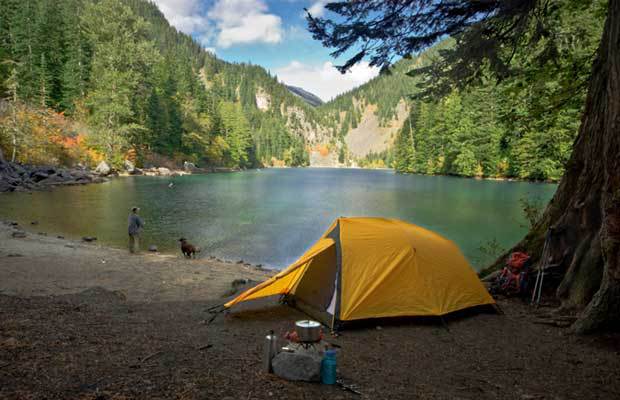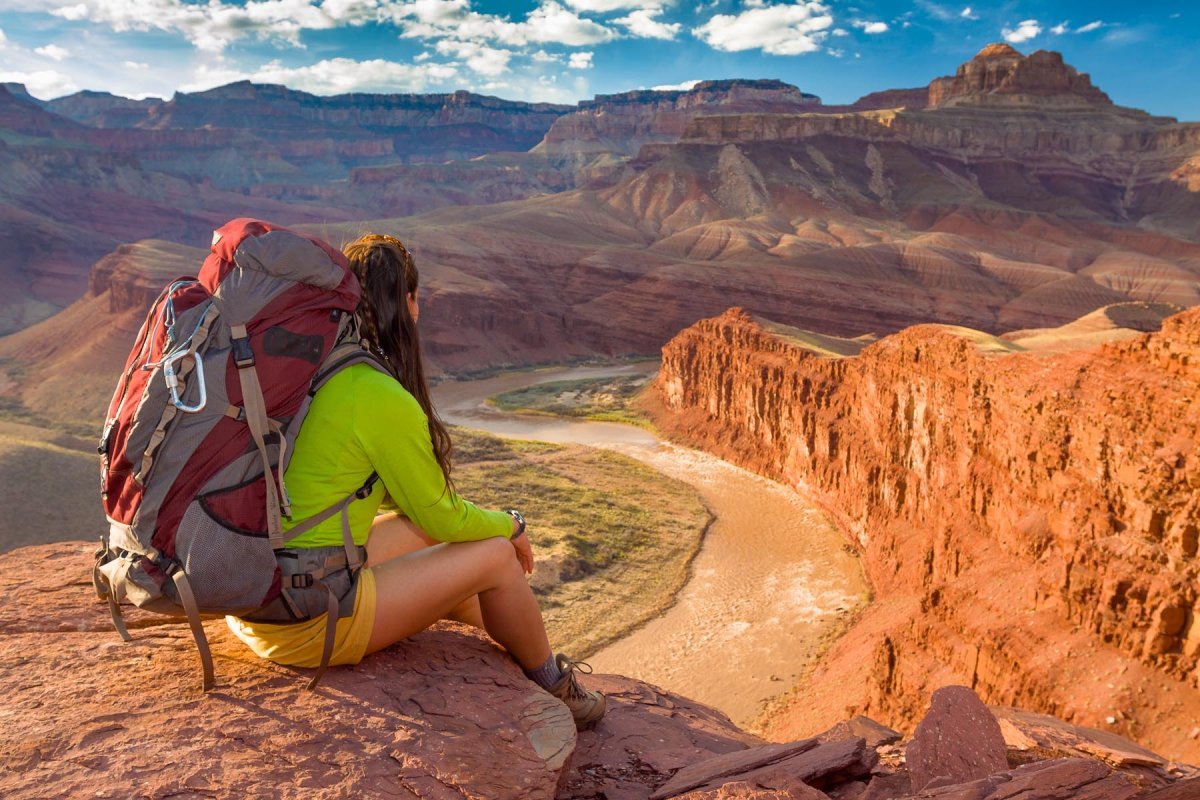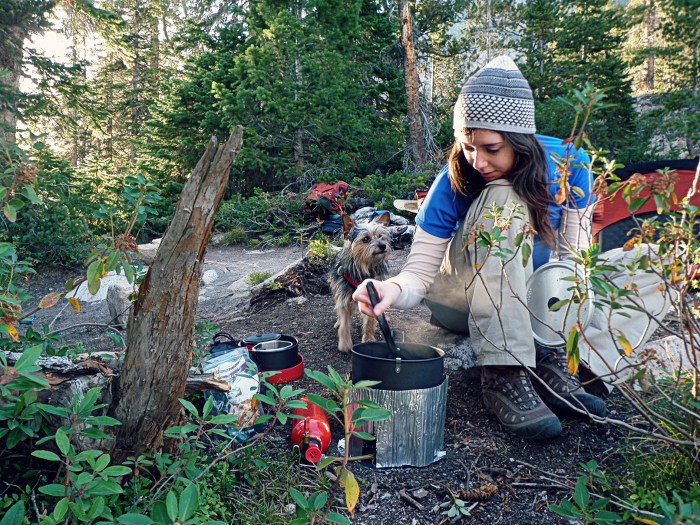10 Ways Your First Backpacking Trip will Better Prepare you for Bugging Out
There are two recurring themes we have in prepping and survival blogs around preparing for disasters of any type. The first is the need to practice any plans you have well before the actual need should arise. This is similar to practicing a fire drill with your children so they will have experience going through the motions and the event will hopefully be more successfully executed because of this training should a real fire break out in your home. Practicing anything you are planning to do when under stress is going to make you better at that task when you are faced with a real scenario. Examples for prepping are to turn off the power for a weekend and live like the grid has gone down. Another theme we discuss regularly is the process and plans for Bugging Out.
Bugging Out simply means leaving the area you are in to move to an area that is safer. It could be safer from a chemical spill, impending flood waters or violence caused by looting. There are as many reasons why you could conceivably want to or have to leave your home as there are for staying. Bugging Out isn’t limited to your home either because you could be anywhere when a disaster strikes and still need to move quickly to a safer location.
Bug Out bags are designed for us to be able to quickly grab enough supplies for each person in your group to live for a minimum of 72 hours at least according to FEMA and although we would like to think we could drive our survival vehicle out of the ruins and wreckage, staying just a car length ahead of the big cloud of disaster rolling swiftly behind us (cue the summer disaster movie music) reality tells us that in times of major crisis, roads quickly become overwhelmed and traffic makes getting out by car at a certain point impossible. Bugging Out on foot is a better plan that will cover the contingencies if travel by vehicle is out of the question.
So, how can you practice bugging out with all of the gear you would actually need to survive for 72 hours or more with only what you can carry and not look like a weirdo? Backpacking into the woods is the best way I can think of to practice bugging out and I have composed a list of 10 ways your first backpacking trip will better prepare you for bugging out below. By practicing an actual bug out for three days in the wilderness you will learn so much that will better prepare you if you really ever have to Bug Out.
A lot of people plan to simply walk into the woods if the grid goes down. I won’t debate the merits of that approach in this article, but I have written on the subject before. All that is fine and well, but you may actually have to leave your home with a pack. If that is your plan, here is your chance to take what you have assembled and do just that. I can almost guarantee that you will learn lessons if you do that now that will change how you really bug out in a potential disaster. I took my family into the woods a few years ago and we have since been back a few times. Here are some of the things I learned from that experience.
1. – Find out what works and what doesn’t. – This is one of the big advantages in my opinion of practicing your bug out plans in this way. When I started building my bug out bag, I had a big list of items I needed and once I had them all, they were crammed into my military surplus bag. After walking around for a while with about 70 pounds of gear I quickly decided that I needed to drop a lot of weight from my bug out bag and that while the military surplus Alice pack was nice, it wasn’t the most comfortable thing in the world. Also, carrying that bag might make me a target a little more than someone who was just hiking with a regular bag in that someone might think I had a lot of supplies in there (prepper) instead of just some sweaty socks and camping gear. I also learned that in general I just had too much stuff. We packed too much food, that was too heavy and our clothing options were more than we needed. Lastly, I found a lighter water filter and all those things combined shaved a lot of weight off my pack and my shoulders.
2. – Live Simply – Piggybacking on the item above, backpacking should give you a great excuse to live simply and to ignore all the extra clutter in our lives. What do I mean by clutter? I have seen a lot of bug out checklists that have so many extra things included that are ridiculous. Kindles or e-readers, coffee presses and a lot of unnecessary creature comforts. In this exercise, bugging out will be to save your life and your bug out bag should be packed with items that will help you live. It should not be packed with small inflatable boats unless your plan is to escape by water, camp chairs and portable fans. Keeping your bag to the essentials will make carrying it much easier. You will also find that you don’t need or even much use some of the extra stuff you brought. Instead of bringing a whole set of cookware and utensils, a simple pot and spoon might be all you really need.
3. – Learn how to use the bathroom outdoors – This might sound silly, but unless you have gone number 2 in the woods then this is something fun to learn. How hard can it be you ask? It’s just squatting, right? Well, maybe it is, but it wasn’t as simple as sitting on the throne for me. I got it done of course, but in the beginning it was awkward and took a little finagling to get right. Just like anything else, practice makes perfect.
4. -Discover wild water – Probably the single heaviest item you can have in your bug out bag is water and we should all know that we need at least a liter per day for optimum health, more if you are in hot climates or exerting yourself and even more for regular hygiene. Carrying a bag on your bag through the woods will exert you but in order to meet the requirements of 72 hours, you do not want to carry three giant bottles of water with you. Learning how to filter your water and of course finding sources of water is going to be the best long term strategy for bugging out. My kids were amazed when I broke out the water filter and in no time had all of our Nalgene bottles filled with clean fresh water out of the river. I swear it tasted better than anything in a plastic bottle from the store or our tap and they all know how to filter their own water now if they need to.
5. – Discover how everyone in your group reacts – One of my initial concerns with my family was how they would react to the wilderness and carrying their bags for three days so I tried to pay special attention to the weight they had and how they were faring on our hikes to new campsites. To my surprise, they all did amazingly well but that might not be the case with your family. By finding out who hates this whole exercise right now, you could save yourself some headache later when just going back to the car isn’t an option.
6. – Find friends with common interests – Once you start backpacking you will invariably meet friends who are also into this hobby. They may share common ideas about being prepared or at the least common interests and skills that might be helpful to your group should we all need to walk into the woods. If nothing else, you may have another source for gear advice should you need it and experienced friends who also like to backpack can share their observations and lessons learned with you on various locations, routes and strategies that could improve your bug out plans. Even if you meet people along the journey, you can learn from them. We only ran into 2 other people the entire weekend we were out, but they all had hammocks instead of tents and sleeping bags so that was something I started investigating.
Learn what to carry and how to cook outdoors.
7. – Increase your options – Simply being able to live for three days in the woods or a field or anywhere outside of a house or hotel is going to give you options if you are forced to leave your home. The more you experience living outside and traveling over distances with your house on your back, the more you will see options where before there was only dread. Leaving home with a pack won’t be as daunting once you have done it a few times for fun regardless of the scenario. The scenario might be bad, but the thought of sleeping in the woods won’t.
8. – Adapt and reuse – One of the best ways to simplify your backpack or bug out bag and to reduce weight is to use items for more than one purpose or to reuse items for something different. One simple example is to have the water filter so you can refill water along your route or at your site as opposed to hiking it in. Clothing is another area that can be viewed in this way. On our trips, I would have one set of pants, not three but these are convertible so I can make them shorts if needed. One fleece, a hat, gloves spare underwear and thermals. The clothing lists changes with the seasons. You don’t need a change of clothes for every day. If the weather or your climate is relatively warm, a tarp will double as a shelter and weighs a lot less than a tent. It takes up much less room too. Paracord can be used as well as duct tape for a million uses.
9. – Set new goals – After our experience in the woods, I wanted to go on longer hikes to have a greater challenge of both navigating terrain and planning a longer stay in the woods. Successes make you strive for new goals, but even setbacks should give you something to strive for. If you have a miserable time in the woods, analyze what the problems were. If it was your gear, this can motivate you to think more clearly about what you have and how to use it for your next trip.
10. – Build your confidence – Lastly and I think the most important lesson you should take from backpacking is the confidence you will have to live in the woods for a while. This was most noticeable in my wife and kids. I was already fine with camping, but for my family this was all new and before we went, there were lots of questions and doubt. After our three days my family was not only happy with the experience, but were really impressed with how “not horrible” our time was. They had plenty to eat even though we had no kitchen table to sit around. They slept well even though their beds were on the ground and we all had a great time even when there was no traditional entertainment to be found. After our first trip my family was ready to bug out and even if that never happened, we had a great new activity to do for fun. Win Win.
There are two recurring themes we have in prepping and survival blogs around preparing for disasters of any type. The first is the need to practice any plans you have



